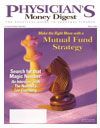A Generation of Debt, Part I: Undergrads
Living with Debt
This past fall, new students acrossAmerica walked upon college campuseshoping that in 4 years, they will secure agreat job or continue with advancededucation, perhaps a medical degree. Acollege education plus hard work guaranteesfuture success; however, the realitythat college students face is a differentstory—unprecedented levels of debt fortheir age. In his report ,Dr. Robert Manning, professor offinance at the Rochester Institute ofTechnology, outlines the social and culturalconstructs surrounding this newgeneration of debt: rejection of Puritanvalues, raging materialism and consumption,and skyrocketing tuitions.
Endangered Puritanism
The baby boom generation accumulatedwealth unparalleled in any otherera. Saving, living within means, budgeting,and self-denial—these Puritan valueshave been passed down through generations.As the children of Depression-eraparents, the baby boom generationembraced these values. Yet as parents,the boomers gave into rising materialexpectations and the enhanced lifestyleof their children. Well-intentioned parentsgrant their child's every wish in anattempt to provide a better life.
Many parents do not even realize thedisservice. With shopping sprees, parentsneglect to impart Puritan values totheir children. This neglect renders collegestudents and graduates unpreparedfor the realities of adulthood. Instead, instantgratification has displaced strictand fiscally responsible values.
"Material items aside, it isn't thethings parents buy for their kids that I'mconcerned about, but more so the attitudethat these children develop fromtheir parents' spending," says ColinWiesner, a 25-year-old CPA. He is evidenceof Manning's belief that parentsare the most important influence on achild's attitude toward credit and debt.
Growing up, the Wiesner family wasconsidered well-off because their father isa physician. Despite the family's incomelevel, Wiesner considers his parents frugal."My parents could have driven luxuryvehicles had they chosen, but theydidn't," Wiesner says. "Up until 2 yearsago, my father drove a 1984 FordBronco. I wasn't really exposed to a lot ofgratuitous spending from my parents as Igrew up." The family lived within theirmeans, and Wiesner learned to embracethis attitude. His parents' spendinghabits have directly influenced Wiesner."Their practicality with their money hasmade me what I am today," Wiesnersays. "Of course I do have the occasionalsplurge, but I know my limits and Iknow what I can and can't afford, andwhat is and is not important."
Wiesner is lucky, as his parents taughthim the value of money at an early age.When he did receive his first credit cardat age 18, Wiesner knew how to handlethe responsibility. "My parents did notinterfere with my spending, but they didremind me that credit cards are not freepasses to buy anything I wanted," Wiesner says. "I knew in 1 month Iwould have an unpleasant surprise inmy mailbox."
Other college students, however, viewcredit cards as an extension of whatManning calls a generationally perceivedsense of entitlement to materialgoods, fueled by "competitive consumption." This attachment to material possessionshas fostered a conditionedresponse of instant gratification. Becausethey are accustomed to a certain lifestyleas provided by their parents, college studentsincreasingly turn to credit cards tofund their materialism.
Journal of
Student Financial Aid
Unlike their parents, the college studentsof today have access to plastic asearly as first-year orientation. In an articlethat appeared in the by Manning andRay Kirshak, banks began to markettheir credit cards to college students inthe 1980s. Initially, card issuers requiredstudents under age 21 to obtain aparental cosigner, but banks rescindedthis requirement by the early 1990s.Driven by higher profit margins and aderegulated banking industry, companiesthen deployed marketing campaignsin full force throughout collegecampuses. According to the FederalReserve, credit card profits have grownat twice the rate of any other bankproduct over the past 2 decades.
In 2004, 78% of college students heldat least one credit card, and 32% had atleast four, according to Nellie Mae. A$500 introductory line of credit in the fallcan quickly rise to $4000 by spring term.As a result, 76% of college graduatesmove their tassel from right to left withan average of $2168 in credit card debt,according to Nellie Mae. This consumerdebt is in addition to thousands of dollarsin educational debt.
Rising Tuition Costs
With the previous generation, it waspossible for a family to carefully save aportion of their modest income to send achild to college. Today, this is almostimpossible. Since the 1970s, federal aidfor tuition has steadily declined. Governmentand institutional grants peakedduring the 1975-1976 school year at$3000 per student or 85% of total financialaid. Only 30% of financial aid packagestoday come from these sources.
As financial aid shrunk, tuitionexploded. According to the CollegeBoard, the average annual tuition inflationrate during any 17-year periodbetween 1958 and 2001 was 6% to9%—1.2 to 2.1 times the general rate ofinflation. For the current 2005-2006school year, the average cost of tuition is$15,566 for students in public 4-yearinstitutions and $31,916 for students inprivate 4-year institutions.
Plummeting aid packages combinedwith soaring costs have shifted theweight of college expenses from the familyto the student in the form of governmentand private loans. According toBankrate.com, the average interest ratefor a private loan is 8% and could be ashigh as 11%. Stafford loans offer in-schoolrates of 4.7% and 5.3%, buteven these subsidized rates are set to riseon July 1. Students now complete theirundergraduate studies with an averageof $18,000 in loans, although it is notuncommon to owe twice that amount.
The expectation of college debt coupledwith a consumeristic culture willcontinue to color the attitude of undergradsas they struggle with their debtinto young adulthood.
What are your thoughts on the debt crisisin America? Physician's Money Digest wantsto know. Please e-mail your comments tombuonincontri@ascendmedia.com.
